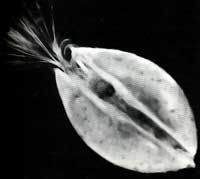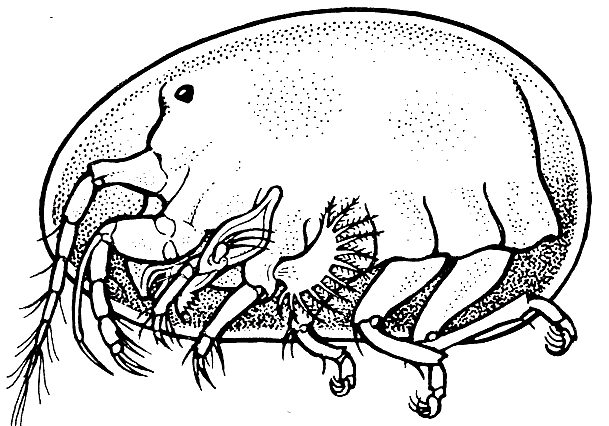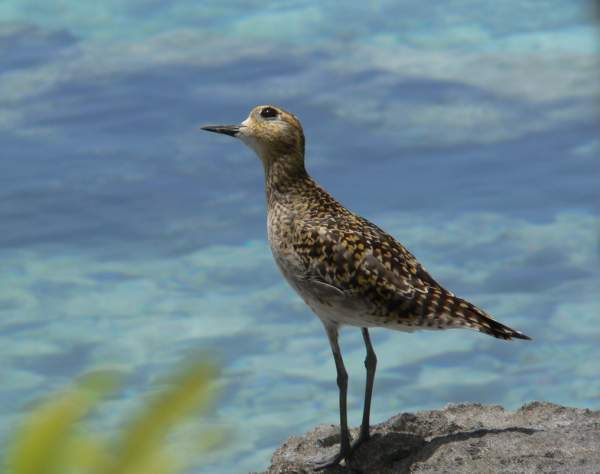Published in the Ocean Watch column, Honolulu Star-Advertiser © Susan Scott
October 28, 2005
I have in my office a shelf labeled Oceanwatch that holds marine-related clippings, newsletters, bulletins and brochures. When this pile gets so high I can’t jam anything else in, I have to weed it out.
This is fun because there are gems in the stack that I’ve either forgotten about or didn’t have time to read. A friend, for instance, sent me a clipping about ostracod penises.
Ostracods are also called seed shrimp or mussel shrimp and look like tiny clams. These mostly minuscule crustaceans are found throughout the world’s bodies of fresh and salt water, and are a major link in Earth’s food chain.


In 2003 (OK, I get a little behind) researchers found a 425 million-year-old ostracod fossil in England. The discovery pushed the presence of ostracods back by about 200 million years.
Since that ancient ostracod had a penis about one-fifth the length of its body, the scientists named it Colymbosathon ecplecticos, meaning “swimmer with a large penis.”
Ostracods as a group, however, are famous for having large penises and producing relatively gigantic sperm. Some species have male organs one-third the length of their bodies, and others produce sperm that measure up to 10 times their body length.
And so, as is typical in discussions about the size of male reproductive organs, this ancient swimmer’s name is an overstatement.
Another 2003 clipping moved me from the Paleozoic era to the 20th century. It reported that a dinner menu from the Titanic sold at a London auction for $49,500.
That’s an astonishing price to pay for a piece of paper the size of a postcard, but it’s not what caught the eye of the reader who sent me the piece. Among other dishes offered on the 1912 menu was golden plover (kolea) on toast.
 Palmyra Plover by Susan Scott
Palmyra Plover by Susan Scott
This meal option is shocking for us plover lovers, and for me the toast somehow makes it even worse.
Today, all migratory shorebirds are protected by state and federal laws, ensuring that we’ll never see plover on a menu again.
In America. Plover expert Wally Johnson writes in Elepaio, the Journal of the Hawaii Audubon Society (I’m up to 2004 here) that subsistence hunters in Southeast Asia, the Philippines and Indonesia still kill and eat Pacific golden plovers. Hunters in Barbados and parts of South America also continue to shoot American golden plovers, our kolea’s eastern cousin.
Researchers don’t know how many plovers are being killed each year, nor do they have an estimate of how many of these birds are alive today. Estimates of Pacific plovers range from 125,000 breeding pairs to 2.6 million breeding pairs, but Johnson believes the high-end estimates are too optimistic.
Collecting population data on these birds is extremely difficult, given their vast range. Researchers do know, however, that Hawaii hosts some of the kolea’s most important wintering grounds in the world.
I might fall behind, but I enjoy reading my clippings and thank those of you who send them. My shelf now has room for more.